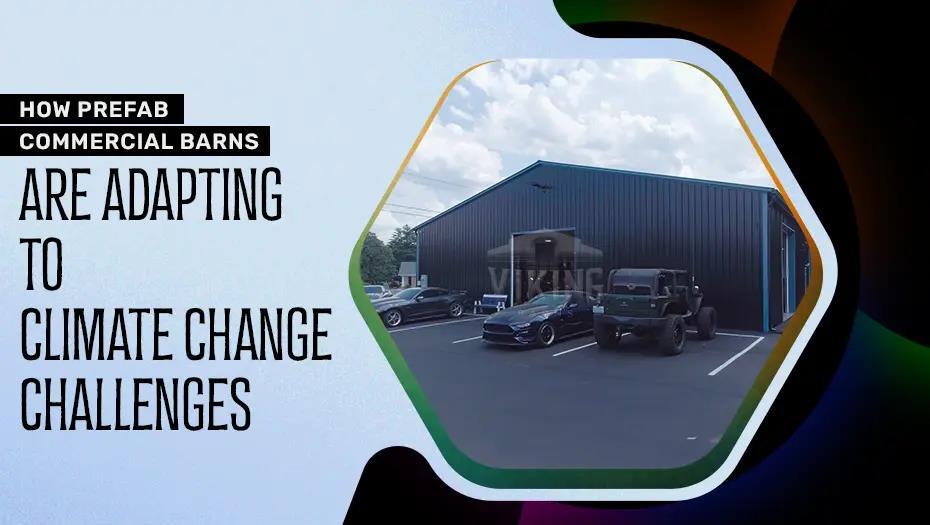How Prefab Commercial Barns Are Evolving to Meet Climate Change Challenges
Barns have evolved from the need for regular repairs to using prefabricated, lowmaintenance, sustainable commercial barns to address climate change issues. Prefabricated steel barns are strong, economical, and environmentally beneficial alternatives to traditional wood barns, but they have limitations, including insect vulnerability, wetness, and weather extremes.

# Climate Change's Effect on Traditional Barn Structures
1. Because lumber for traditional barns is taken from forests, habitats, and biodiversity are lost. The structural steel used to construct a prefabricated commercial barn is recyclable forever.
2. Extreme temperature changes can cause wood to expand, compress, crack, bend, warp, or twist, weakening the structure over time.
3. Another problem with wood is that it is a natural habitat for rats, insects, and birds. They are drawn to places of safety. A termite colony living in the posts and
frame of your wooden barn is not in excellent shape.
4. Additionally, wooden barns are inappropriate for harsh weather and need extensive upkeep to remain in their current location for their lives.
Prefabricated Commercial Barns' Benefits For Handling Climate Change Issues
Modular Design: Prefab metal barns are built in the factory, making them much quicker and easier to assemble on-site. Not only do they save time, but they also need fewer people to assemble.
Using Sustainable Materials: 100% of structural steel can be recycled, with 98% happening yearly. Steel can be made and used repeatedly without losing its structural strength and durability. Additionally, modular prefabricated commercial barns produce less trash on-site.
Water Management: Less water contamination is implied because about 90% of the water used to make steel is returned to its source cleaner. A collection tank can be installed to collect rainwater, gutters, and downspouts.
Customization Options: Accessories can be added to metal structures to improve appearance and functionality. Additional lean-tos [on one on each side], looming barns intended to provide vertical space, custom doors and windows, and color selection are a few typical unique features.
# Adaptations For Extreme Weather Events
● Steel Gauge: Although 12-gauge steel offers more strength and support for solar roof panels, industry-standard 14-gauge steel frames are typically fitted.
● Vertical Roofing: We advise going with corrugated vertical panels for the roof of your prefabricated commercial metal barn. These panels are made to be aerodynamic, long-lasting, and require little maintenance. Large barns and locations vulnerable to severe weather conditions are good candidates for them.
● Certifications: Numerous zoning and building regulations may require the installation of an engineer-certified steel building. These buildings are made to resist 80 pounds of snow per square foot and gusts as strong as 180 miles per hour.
Conclusion:
Commercial steel buildings are designed to endure harsh weather conditions, rust problems, and extensive maintenance. Businesses and farmers can rest easy knowing that their steel barns are certified to resist the negative effects of climate change.
